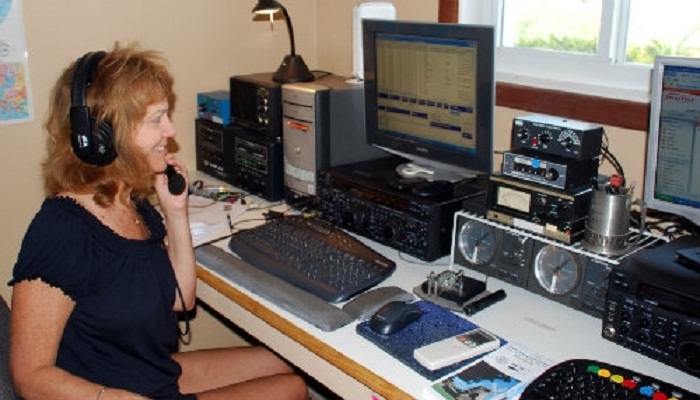What does amateur radio mean to you? What does it mean to be amateur radio? What pictures are drawn in your mind when you hear these words? Do you think about Morse code, experimentation with radio equipment, or the news about amateur radio that sends messages after a natural disaster like earthquakes? Well, in principle the amateur radio takes care of all these things by simple liking.
Miscellaneous origin
Communication and experimentation: these are the purposes of amateur radio and the motivations by which people of all social levels becomes amateur radio. Young and old, together they enjoy the thrill of finding and exchanging ideas with people from all over the world. It is almost impossible to describe in words, the excitement of building a team or the achievement of a new circuit and then getting it to behave as it should to incorporate it as a further refinement to the station.
Every amateur radio station has a distinctive or indicative call with which it is identified. The prefixes for these calls have been allocated worldwide by the International Telecommunication Union. For example, call signs whose first letters are AA, AL, K, N, or W belong to the United States of America. One of the most well-known call signs in the world is W1AW, which belongs to and identifies the station of the American Radio Relay League, the American amateur radio association, which was erected in memory of the association’s founder, Hiram Percy Maxim.
Amateurs Radio live so identified with the call sign of their own station that almost always person and calls are closely linked in the minds of friend’s colleagues. Barry, K7UGA, of Arizona has “worked” (spoken to) thousands of colleagues in the air. Most of them were unaware that it was no less, than Senator Goldwater of the United States. King Hussein of Jordan is another amateur radioman who is simply known by JYI among all his friends in the ether. The same happens with the King of Spain, Juan Carlos, EA0JC; with the former president of the Republic of Italy, Francesco Cossiga, whose call sign is I0FCG. And just as there are coexisting kings, prominent politicians and famous artists in the ranks of amateur radio, they are mostly fed by people of all social levels, from all ages, from teenagers to “old” over eighty and who enjoy the radio. And many handicapped people whose only source of fun is radio.
Electronics surround by a certain halo of mystery for most people, although it has a primary role in everyday life. A layman in the matter experiences confusion with words such as volt, ohm or ampere. But once someone explains in plain language the fundamental concepts, these words lose all their occultism and no longer inspire fear.
Home construction
Amateurs Radio appear in the most unexpected places. Dr. Peter Pehem, 5Z4JJ, is one of the flying doctors in Africa. He lives in a small village on the northern slope of Mount Kilimanjaro in Kenya. He feels interested in amateur radio satellites but cannot spend much time during his work. But in his few free hours he enjoys enjoying himself by dedicating himself to his favorite hobby and receiving the breath of hundreds of people scattered all over the world!
Someone gave Peter an old radiotelephone, a radio lamp, and a section of coaxial cable. To this material the doctor added some tubes of empty aspirins and a quartz crystal from the radio of his plane. In the middle of the African jungle, he managed to build a home transmitter with which to talk to the entire world through the satellite OSCAR, Orbiting Satellite Carrying Amateur Radio. Peter showed the world something important with his domestic construction team: it is not necessary to have the latest model of commercial equipment to have fun in the ether. A truth is that newcomers to the amateur radio discover every day.
There was a time, many years ago, when there was no commercial amateur radio equipment. Amateur Radio pioneers, who began their activities more than 75 years ago, strove to discover ever more effective systems for communicating with each other. All the equipment was ineludibly of homemade construction and had sufficient capacity to maintain the communications for several kilometers. Some of these transmitters consisted simply of a section of copper wire wound along a cardboard tube and electrically attached to a few basic components and to a wire that was used as an antenna. Often communication could only be established in one sense, with a transmitting station linking with several receiving stations. Over the years amateurs radio have always strived to find ways to better transmit and achieve greater reach. Still today they constantly strive to improve their communications by trying to develop and advance the art of radio communication. You can get professional assistance from a reputed service provider like dx.
